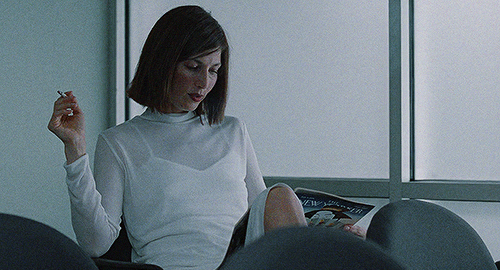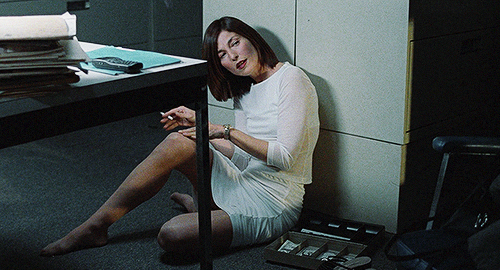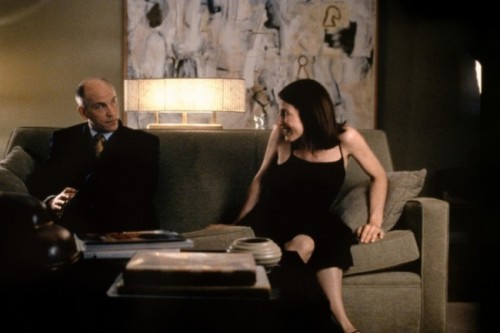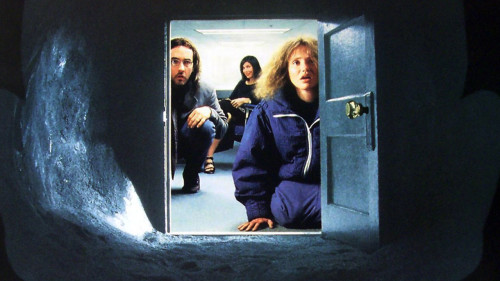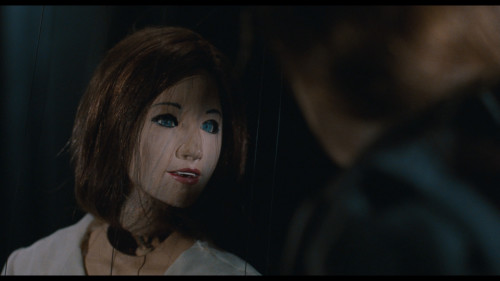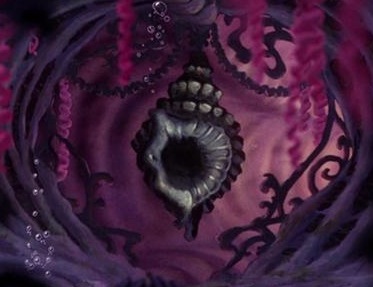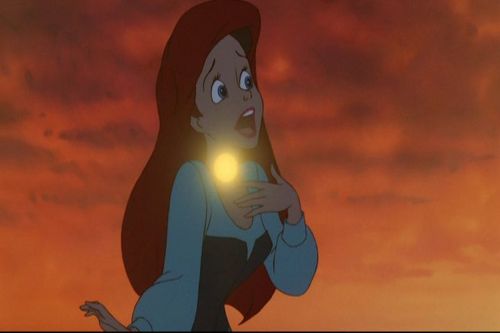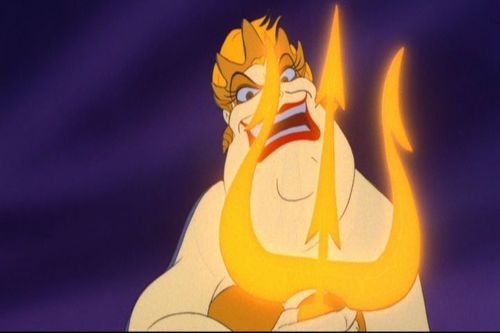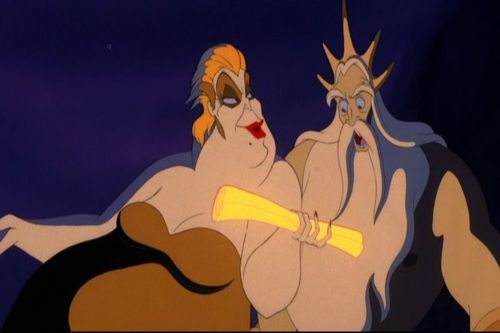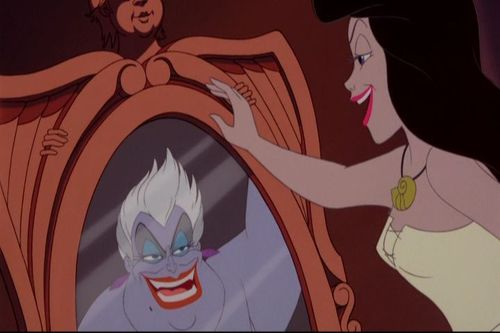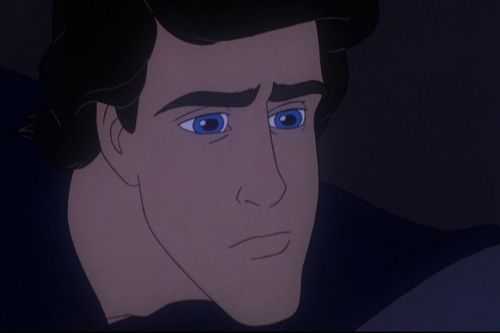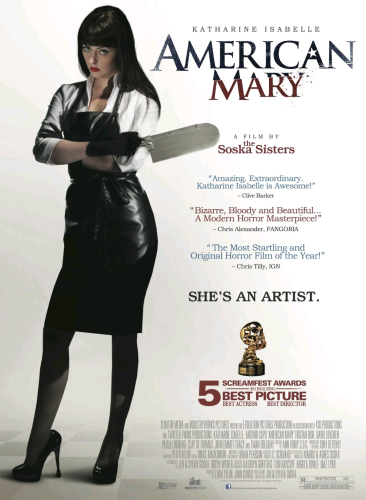
Written by Mychael Blinde as part of our theme week on Unlikable Women.
Directed by the Soska sisters, American Mary features a complicated female protagonist who starts out as a likable badass but ends up as an amoral psycho. The film celebrates the power of bodily autonomy and depicts the horror of taking it away.
Trigger Warning: American Mary is a rape/revenge film and this essay discusses sexual violence.
This post is Spoiler Free! I want you to see this movie. (If you can stomach it.)
The film in a nutshell: We meet Mary (Katharine Isabelle) as she’s carefully practicing her surgeon stitching on a turkey in her kitchen.
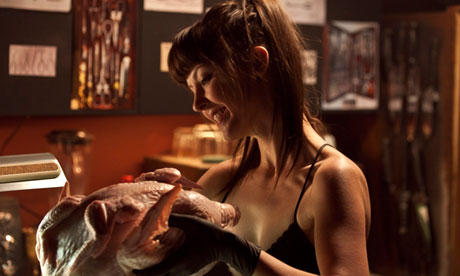
Mary is a med student whose financial situation has become dire. She “interviews” to become a stripper and by awesome happenstance winds up entering the underground world of extreme body modification.

After she is suddenly and horrifically physically violated, Mary spends the duration of the film torturing the hell out of her attacker and becoming famous in the body mod community. I want to avoid spoilers, so suffice it to say that eventually, the shit hits the fan.
American Mary’s directors, Jen and Sylvia Soska, are Canadian twin sisters, and they make an appearance in the film as German twins who want to exchange their left arms to remain symbolically together forever. The Soskas’ production company is Twisted Twins Productions, and their first film is titled Dead Hooker in a Trunk.
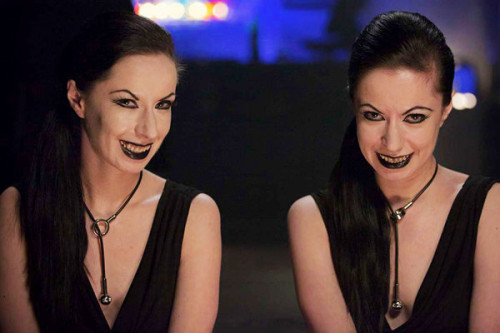
For an awesome interview with Sylvia and Jen, look no further than this Bitch Flicks piece: “Talking with Horror’s Twisted Twins.”
The sisters discuss representations of violence against women in film, and they remark on the ability of horror films to inspire conversations that address our critical need to make the world a safer place for women:
Sylvia: The prolonged death of the Hooker in [Dead Hooker in a Trunk] was made with the intention of being very difficult to watch. We didn’t create the term “Dead Hooker in a Trunk,” there is a society wide stigma on these women that devalue them as worthless human beings…We are at a point in time where we need to get a zero tolerance for horrendously vile acts against women. We put these moments in these films because we want to open up a dialogue about it and it’s a lot easier to do with a genre film than other platforms.
The only acceptable way to represent sexual assault is to represent it as horrible and horrifying, and in American Mary, the Soska sisters succeed: their representation of Mary’s rape neither exploits nor glosses over her violation.
Jen: The reason we put violence against women in our films is because it is so common in real life. It’s so common that people just turn a blind eye to it. The amount of letters and emails we’ve received from women who’d been sexually assaulted and had their attacker go unpunished was disgusting. They were so happy to see Mary get her revenge because there is so little justice in the world.
The directors also talk about depicting flawed female characters:
Sylvia: There is such a famine of a representation of women, it’s almost like you have to make an excuse for a female character if she does something that isn’t perfect or proper. But women are flawed. We’re human. We’re just like men, and we can be interesting and crude.
I’ll address the film’s depiction of Mary, her flaws and the flaws in her representation (there’s really just one little thing that bugged me) later on in this piece, but first, let’s take a sharp left turn and talk about body modification.
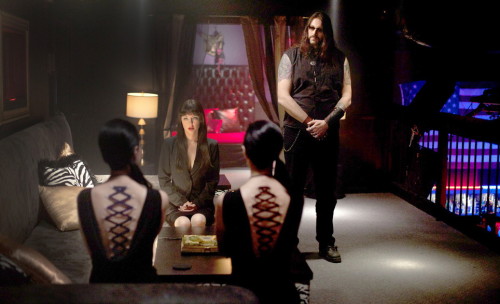
In horror, the mutability of the human body is typically presented as uncontrollable, and therefore terrifying. In American Mary, we get to see the creepy yet beautiful possibilities of controlled bodily mutability. Here, body modification isn’t horrible; it’s aspirational.
Body modification is an ancient practice. Human beings’ adeptness at manipulating our environments is a defining characteristic of our species, so it should come as no surprise that for pretty much all of human history we’ve been manipulating our bodies as well. (Cf. piercings, tattoos, circumcision.)
Courtesy of Bradley University’s Body Project:
We tend to think of human bodies as simply products of nature. In reality, however, our bodies are also the products of culture. That is, all cultures around the world modify and reshape human bodies. This is accomplished through a vast variety of techniques and for many different reasons, including:
– To make the body conform to ideals of beauty
– To mark membership in a group
– To mark social status
– To convey information about an individual’s personal qualities or accomplishments
People may seek to control, “correct” or “perfect” some aspect of their appearance, or to use their bodies as a canvas for creative self-expression.
Our society tends to be accepting of body modification that seeks to attain a look that’s more aligned with our conventional standards of beauty, but we tend to reject modifications that seek to depart from the hegemonic norm.
American Mary asks the viewer to like and root for characters who seek more radical transformations and unorthodox forms of self-expression. Though we are primed to expect these strange looking characters to be scary weird bad people, the body modders are actually the most likable folks in the entire film. They are helpful and thankful and kind. And while their modification choices may seem bizarre, their decisions to seek augmentations are presented in a way that is respectful both to their characters and to the community they represent.
First, we meet Beatress (Tristan Risk):
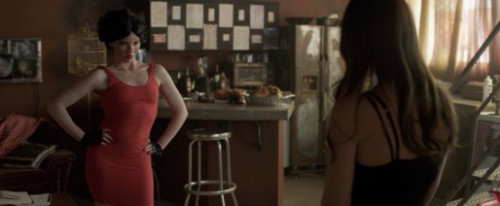
Beatress: “I’m lucky enough to be able to afford to make myself look on the outside the way I feel on the inside.”

She explains: “In my travels, I met another girl like me, but she hasn’t been able to find someone to finish her. I want to hire you…She’s a nice girl who wants an unconventional operation.”
Then we meet this nice girl, Ruby (Paula Lindberg), who asks Mary (and by extension, the viewer):
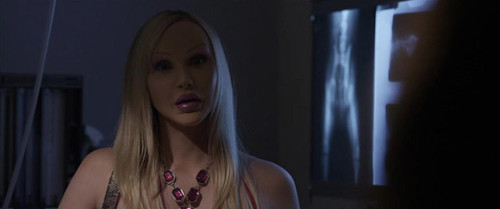
Ruby: “I don’t think it’s really fair that God gets to choose what we look like on the outside, do you?”
As individuals, we should all have power over our own bodies, whether we want to shave our legs or dye our hair or pierce our skin or modify our secondary sex characteristics. We as a society should accept and respect the bodily autonomy of every individual, regardless of that individual’s personal choices.
Sometimes people want to make changes to their bodies that deviate from that which is culturally sanctioned. Who are we to stop them?
This guy had his penis and his balls removed and he’s doing just fine. This guy is famous in the body mod community for implanting magnets in people’s fingers. (With a magnet implanted, you can FEEL electromagnetic fields. I WANT ONE — how amazing to have an electromagnetic sixth sense!)
Whether aspiring to become more “normal” or more unique, we should all be afforded the opportunity to safely seek alterations to our bodies. Our bodies are our own.
Or at least they should be. With the terrifying depictions of both Mary’s rape and her revenge, the loss of control over one’s own body is the driving force of horror in this film.
Another facet of the film’s horror is the age-old adage that appearances are often deceiving. In American Mary, everything is the opposite of what the viewer has been cultured to expect: the body mod freaks are the good people, the seemingly respectable doctors are the villains, and the Mary we see at the end of the film is not the Mary we thought she’d become when we first met her stitching up her turkey.
Let’s talk about Mary and American Mary’s representation of an amoral lady protagonist:
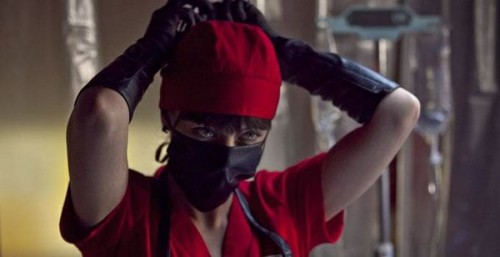
Mary is depicted by the Soska sisters and portrayed by Katharine Isabelle as smart, strong, resourceful, and funny. She has agency and complexity. She is a fully formed, dynamic character. She propels the narrative. This is her story. No Male Protagonist’s Girlfriend here.
Some reviewers feel that Mary’s sexy attire detracts from her ability to be considered a true icon of feminist horror. Courtesy of I Just Hate Everything:

In an interview with the Soska sisters, Steve Rose of The Guardian points out that “Katharine Isabelle’s wardrobe in the movie consists primarily of lacy negligees, lingerie and fetishistic surgical outfits.”
In response: “We’re very into third-wave feminism, where a woman can own her sexuality and not shy away from it,” says Jen.
There are moments in American Mary when the filmmakers play up Mary’s sexy sexiness more than necessary, but there are also moments when they utilize women’s scantily clad or naked bodies in ways that are refreshingly subversive.
I don’t think we need two lengthy sequences of the strip club owner’s fantasies of Mary dancing sexy dances for him.

I’m not so much bothered by the inclusion of these moments; OK, fine, show us that he’s got a twisted thing for her and remind us that she’s hot, whatever. It’s the lengthiness of these sequences, the extended time devoted to showing us Mary’s sexy body on display explicitly for the male gaze. These moments feel especially unoriginal and pandering in a film that’s otherwise so refreshingly transgressive in its approach to representations of women’s bodies.
For example, the scenes in which Mary performs surgery in her stripper outfit are a clever subversion of horror’s traditional representation of sexy lady torture victims.

In these surgery sequences, the sexy lady is a woman with the power to save or take the life of the whimpering man lying (or hanging) in front of her. She might be clad in thigh-highs, but she’s the opposite of a victim.
I also appreciated the unabashed depiction of Ruby’s surgery. I won’t give away specifics, but let’s just say that American Mary takes a much different approach to naked breasts than any movie I’ve ever seen. It’s a paradigm shift for tits on screen.
While many reviewers enjoyed the first half of American Mary, they often disliked the ending, calling it a “murkier narrative that lamely sputters to its conclusion” (Hollywood Reporter) in which the Soska sisters “allow their film to turn slack and unfocused after an enticingly lurid, wickedly tense first half” (LA Times).
One reviewer (The Playlist) writes (emphasis mine):
Dreams slip into reality and fantasy assumes a nightmarish plausibility as Mary’s rationale melts away; one could argue her transformation into an avenging sadist takes the teeth out of the film’s medical industry critique, turning it into just another gothic story of one who abuses absolute power.
I suspect that these reviewers’ dislike of the ending stems from their discomfort at witnessing the abruptness of Mary’s transformation from a witty, strong, resourceful rebel into a sociopathic monster. Initially, the violence she enacts stems from a sense of righteous vengeance, but suddenly her violent acts are completely unjustified and totally reprehensible. We all start out rooting for Mary, but we wind up repelled by her.
In a wonderful essay entitled “Not Here to Make Friends” — also featured in her excellent book, Bad Feminist — Roxane Gay writes:
Writers are often told a character isn’t likable as literary criticism, as if a character’s likability is directly proportional to the quality of a novel’s writing. This is particularly true for women in fiction. In literature as in life, the rules are all too often different for girls. There are many instances where an unlikable man is billed as an anti-hero, earning a special term to explain those ways in which he deviates from the norm, the traditionally likable. Beginning with Holden Caulfield in Catcher in the Rye, the list is long. An unlikable man is inscrutably interesting, dark, or tormented but ultimately compelling even when he might behave in distasteful ways.
Thanks in large part to feminism, our society now generally embraces representations of Strong Female Characters — at least when these Strong Female Characters are presented as morally upstanding. We’re still wildly uncomfortable with depictions of amoral anti-heroines.
There is a longstanding history in the horror genre of the Final Girl character. Traditionally, she is the most virtuous character in the film, the embodiment of morality, and her defeat of the monster represents Good triumphing over Evil. While the Final Girl doesn’t always win the battle (and sometimes doesn’t even survive), she typically remains virtuous throughout.
In a piece for Indiewire titled “American Mary Sets out to Modify the Way You Think About Women in Horror,” the Soska sisters explain their approach to Mary in the context of the history of the Final Girl:
American Mary evolves the final girl once again where not only is the final girl powerful, precise, and fearless, but she becomes her own undoing and takes on the roles of villainess and heroine simultaneously.
We viewers may want Mary to end the film a righteous hero, but to give Mary’s story a happy ending would be to suggest that there is a simple way to right the wrongs of sexual violation. This isn’t to say that survivors of assault can never overcome their trauma, but to point out that there is no easy answer to the question of how to process such violations of the body. Revenge can’t erase Mary’s experience of assault. Vengeance doesn’t make it all okay. Violence begets violence, and everything falls apart.
The final sequences of American Mary may be something of a surprise, but they make sense within the larger thematic context of the film: the horror of losing control of one’s own flesh and the devastation of physical violation.
American Mary is a stellar film and I’m excited to see more awesome work by the Soska sisters!

Mychael Blinde writes about representations of gender in horror at Vagina Dentwata.
